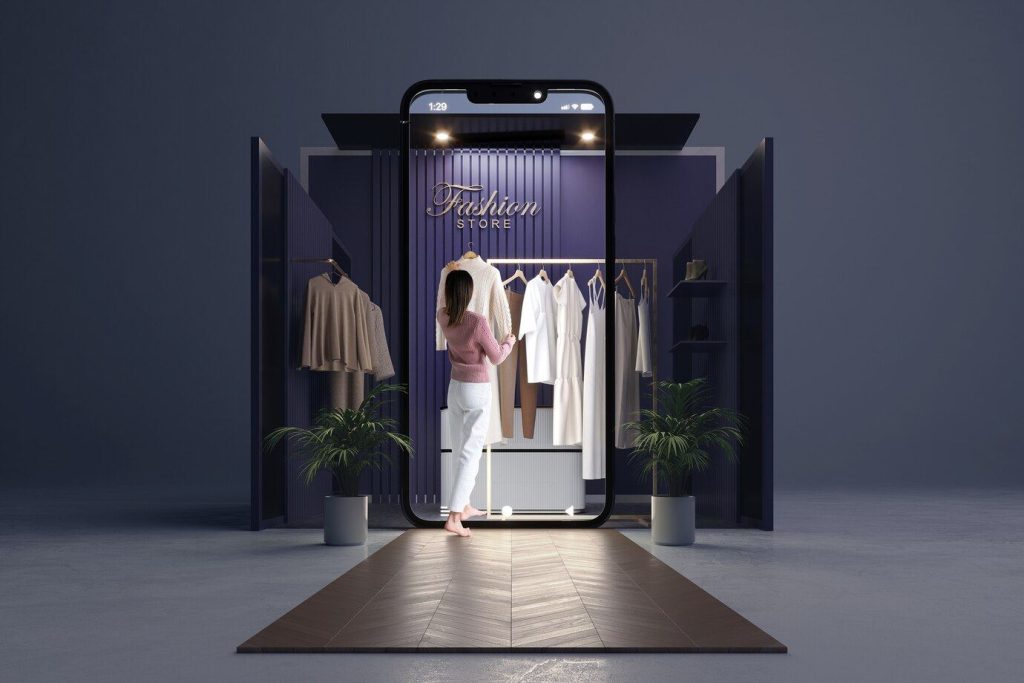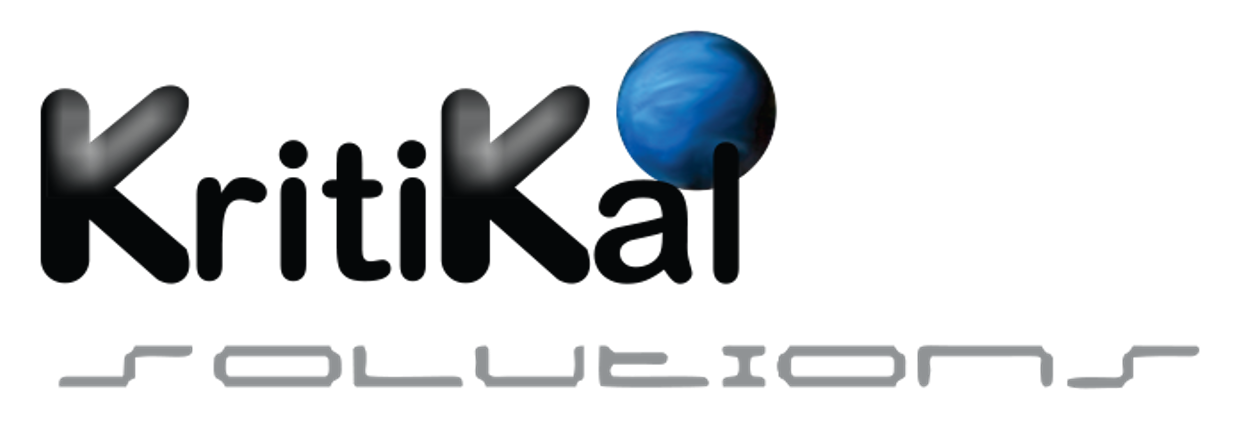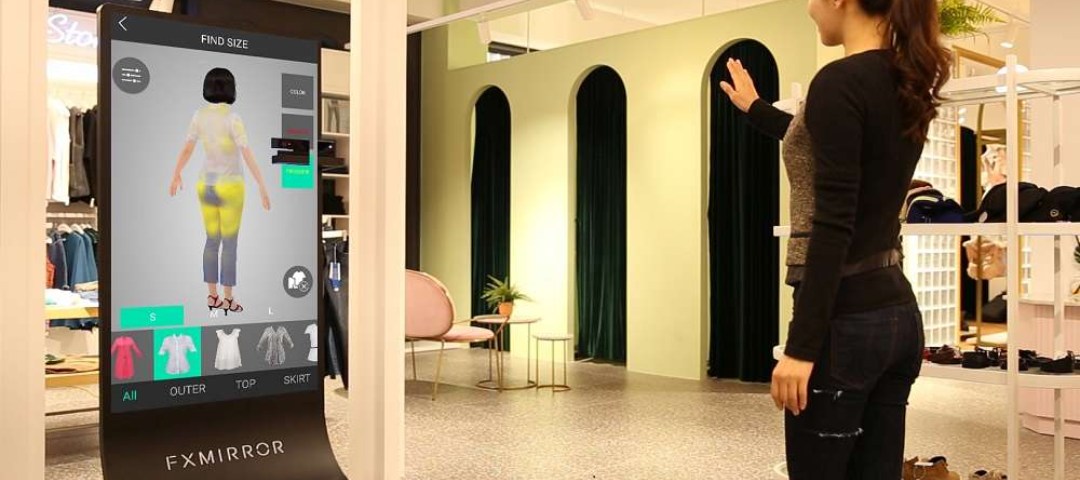The global fashion industry is undergoing a groundbreaking leap into the future through various transformative tools, especially with those placed near the point of sales at stores for better sales. One of these is virtual try-on for clothing, a cutting-edge tool that combines augmented reality (AR) and artificial intelligence technologies for providing a seamless user journey. This technology can be experienced via AR mirrors at retail stores, in which the digitally generated replica of the cloth of choice appears as a visual overlay for the shopper in real-world without having to try cloth physically. AR-based virtual try-ons are also applicable for make-up, acrylic nails, hair styles, spectacles, beauty products, jewelry, helmets, footwear trials etc.
Another modality for AR virtual try-on clothes is via shopping applications providing similar functions over intuitive devices that support this virtual setting like tablets, smartphones or laptops which may be present at the retail store or at the user’s home. The cloth can be tried on and made to fit virtually over the user’s body in the retail stores, over their image or even over their moving and rotating avatars generated in real-time over shopping apps. These features are also integrated over the cloth brand’s online website in most cases. Now-a-days users can utilize AR cloth filters present on the brand’s social media pages for unique buying experience.
Given below are a few statistics associated with virtual try-on for clothing industry:
- The global retail e-commerce market size was reported to be USD 5.2 trillion in 2021, which is forecasted to grow and reach approximately USD 8.1 trillion by 2026, surging at a compound annual growth rate of 56%, as per a Statista report.
- Under the global retail e-commerce industry umbrella, the fashion and apparel sector has been emerging as the fastest growing category. It is reported to reach a value of USD 1.2 trillion by 2027 from its current value of USD 820 million in 2023 (CAGR expected to be 8.7% during the forecast period of 2021 – 2026).
- According to a Statista report, it is expected that the global augmented reality industry is likely to reach a market value of USD 198 billion by 2025, from its initial value of USD 3.5 billion in 2017, thus, drastically increasing at a CAGR of 67% during this forecast period.
- The virtual try-on (VTO) for clothing industry, also considered as the virtual fitting room industry, is surging profoundly and experiencing an overall compound annual growth rate of 24.1%, starting from its current market value of USD 3.78 billion to around USD 17.14 billion during the forecast period 2023 – 2028 [GrandViewResearch].
Advantages of VTO for Clothing
The following are few advantages of virtual try-ons for garments:
- It allows shoppers to experience the cloth without actually doing so in reality or making any purchase. It breaks the walls confined around traditional retail sales methods and provides an additional certainty about cloth fittings. The immersive element of AI recommends preferable products over a user-friendly interface as the shopper tries out the clothing virtually in front of a smart mirror or other related intuitive device like tablets etc.
- Other advantages of virtual try-on for clothing would include determining accurate body measurements and proportions without any aids like salespeople or tailor, reducing overall costs. Virtual try-on algorithms showcase quite sophisticated features with 3D modelling of clothes and sometimes, the shopper as well. Results are generated within a matter of milliseconds in real-time as compared to long waiting periods in physical fitting rooms.
- These modelling features allow users to view their overall cloth fitting from all angles by rotating it 360 degrees and inspecting it. Some web and mobile-based virtual try-on clothes app also generate 3-dimensional avatars of the users so that they can experience and gain a comprehensive understanding on how the cloth fits and appears over them during movement from all angles.
- Retail stores need not configure AR systems manually or install any particular software for showcasing their products to customers, since these are plug-and-play solutions, making them user-friendly and easy to use even at the shopper’s home. Through virtual trial provision, retail stores are also able to save the costs of constructing more physical fitting or trial rooms with the increasing flow of customers. These also resolve the unnecessary costs, environmental impact as well as customer inconvenience associated with product returns. Trending AR filter lens provides an upthrust to the brand’s marketing over social media platforms without having to invest extensive efforts in email and other promotional campaigns.
- The brick-and-mortar store’s clothes are made available online assisting in global outreach, where customers experience curated selection of clothing items via virtual clothing try-on without even setting foot in the physical store. Neo-retail stores like Amazon help in such wide outreaches of local stores without having to build physical retail store chains, again saving costs and accomplishing better investments.
- This feature is also beneficial in terms of gaining insights on user analytics with respect to purchase and browsing history as well as preferences in clothing styles. Retailers can thus leverage AI-based personalization and product recommendations with the help of above obtained data for existing users’ unique tastes and fashion profile and for new users with time. This introduces the element of serendipity for better engagement and increased loyalty.

The Functional Course of Clothing VTO
Moving forward, let us now delve into the key algorithms and their working used in virtual clothing try-ons:
Image Segmentation
Detection algorithms or sensors help in detection of the user present in front of the camera integrated in the smart mirror or intuitive device such as tablets, laptops, smartphones etc. Semantic segmentation helps to identify and classify the human body parts into categories such as head, arm etc. It does so by labeling and classifying images taken at the instance at the pixel level, in order to place the garment accurately over the user.
Pose Estimation & Measurement
Another important aspect is determining user’s pose estimation which detects angles of joints for accurate measurement and overall position of the user. This algorithm gathers basic information such as height and proportions for analyzing the shopper’s body measurements. This ensures that the clothing is perfectly aligned with the user’s body and position.
3-D Modeling
After this, in some cases, advanced AI technology creates a replica 3D model of the user. The human body 3-D reconstruction occurs based on images and videos obtained in 2-D from the camera and is crafted by using advanced methodologies such as Computer Aided Design (CAD) and 3D scanning. The major steps involved are pre-modeling, edge planning and topology considerations. 3D modeling can be executed through different methods such as Polygon modeling, Sub-D modeling, ZBrush or Autodesk Mudbox sculpting modeling etc. that can be used to replicate both face and body of the shopper.
At other times, a demo face or digital avatar with similar specific features of the shopper is created using thin plate spline method and depth information-based or shape field-based (for details like patterns and folds) 3D reconstruction. The virtually created 3D asset that is clothing is superimposed onto user’s 3D avatar. This acts as a crucial step for a realistic representation and virtual clothing fitting experience.

The above image showcases AI-powered smart mirror for VTO
Clothing Simulation
A digital version of the cloth is showcased through AR technology, which may already be present in the database, but is modified according to user’s physique and measurement. The virtual cloth is placed either on the original image of the user or over their digital avatars. In both cases, the drape, fit and movement of the cloth are simulated over the avatar or user’s body, as per the fabric’s expected dynamic behavior in different situations and measurements.
Texture Mapping
Texture transfer accurately maps the virtual cloth’s texture on the user’s 3D model or original image. This assures the precise look and feel of the cloth via a realistic design that is aligned with the body contours, movements and environmental interactions in real-time.
Real-Time Rendering
High-quality graphics provide the user with an immersive experience and fidelity through real-time rendering of images and videos. The user experiences a responsive virtual design in terms of various angles and movements.
Augmented Reality
Augmented Reality or Mixed Reality (MR) utilize movement tracking sensors or ArUco markers integrated with vision cameras’ algorithm to adjust virtual items as per user’s position, therefore, combining virtual clothing with the real environment. Intuitive interfaces allow users to choose viewing angles of their avatars over a touchscreen and even through certain gestures. Smart mirrors or AR mirrors also guide the user through voice assistance towards the area of perception for accurate functioning and results.
Pattern Recognition
Machine Learning (ML) algorithms are trained to understand and recognize loyal customers’, in case of smart mirrors as well as online users’ shopping history, interactions and behavior with regards to their specific clothing styles, colors and size.
User Feedback
User interaction and feedback are collected by these ML algorithms to improvise their functioning, for example, angles of rotation during garment inspection, zooming value, preferred texture and flexibility of movement are all noted and incorporated in the feedback loop. This aids in style personalization and accurately suggesting relevant virtual clothing along with accessories, footwear, cosmetics and other such recommendations as per user’s preferences, thus, all together enhancing their overall dynamic experience by reducing data driven virtual and real-world fit discrepancies.

The Future of Personalized Shopping
Virtual try-on for clothing is likely to shape the retail fashion industry, so much so that retail technology solutions like VTO are likely to become expected standards with time, especially on retail e-commerce websites and applications. More accurate, quicker measurements and virtual garment fitting, make it more and more convenient for the shopper to visualize their realistic outfit from various angles, under customized lighting conditions through ray tracing and at their convenience. Personalization algorithms are becoming increasingly precise (79.4%) with respect to precision recall, F1 score and mean average precision evaluation metrics, therefore, producing better return on investments. Advanced Machine Learning models such as Matrix Factorization and Neural Networks can potentially reach higher accuracy with time.
Deep Learning models such as Neural Collaborative Filtering, Hybrid Content-based Filtering etc. are likely to recognize user behavior precisely based on their purchase history, environment and feedback. Every retail fashion e-commerce company would probably be subjected to release virtual try-on filters for their clothing lines over social media, for example, Levi’s merchandiser Kohl’s and FarFetch have collaborated with Snapchat for the same. Most retail stores are likely to provide auditory assistance integrated in smart mirrors during the try-on in lieu of salespeople. In rare and advanced cases, these mirrors may also be equipped with somatosensory features that require haptic perceptional feedback on the cloth material from the user (similar to iPhone X and PlayStation 4 features) that may stimulate impulsive buying from user’s end.

Source: Vogue
Summary
To conclude, it is fair to say that virtual try-on, an amalgam of Artificial Intelligence, Augmented Reality and 3D modeling has revolutionized the retail fashion industry. These utilize advanced algorithms such as image segmentation, pose estimation, machine learning, AR-based real-time rendering etc. for complete user satisfaction.
KritiKal Solutions carries computer vision development services based expertise of more than two decades. It has assisted some major retail giants, SMBs and Fortune500 companies in developing virtual try on solutions as per their requirements. It has also tackled their AR/VR related challenges and developed intelligent 3D store simulation, virtual annotation toolbar, virtual education applications, real-time visualization of pre-set and geo-tagged location, virtual make-up and jewelry try-on applications, wall color visualizer and more.
Virtual try on’s for clothing have numerous benefits over physical fitting rooms and save infrastructure and global outreach expenditure incurred by retailers otherwise. With accurate measurements and clothing recommendations over a user-friendly interface, overall shopping experience is enhanced, thus, creating loyal customers. Join hands with KritiKal Solutions to provide your customers an immersive walkthrough of your store across the globe and help them in visualizing your products and clothing lines at their convenience. Please call us or mail us at sales@kritikalsolutions.com to avail our virtual try-on and other augmented reality-based application development services.

Akash Panchal holds the position of Senior Computer Vision Engineer at KritiKal Solutions. He has extensive experience in the fields of Deep Learning, Cloud and Machine Learning and is profoundly skilled in Python, object detection and image classification. He has dedicatedly helped KritiKal in timely delivery of various projects to SMBs and Fortune500 companies.



 Global
Global  United States
United States 
